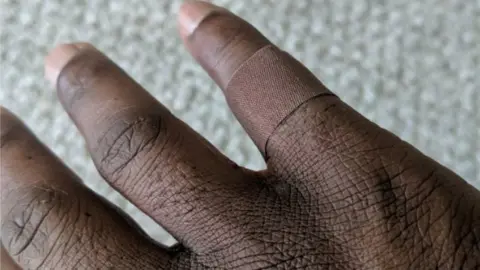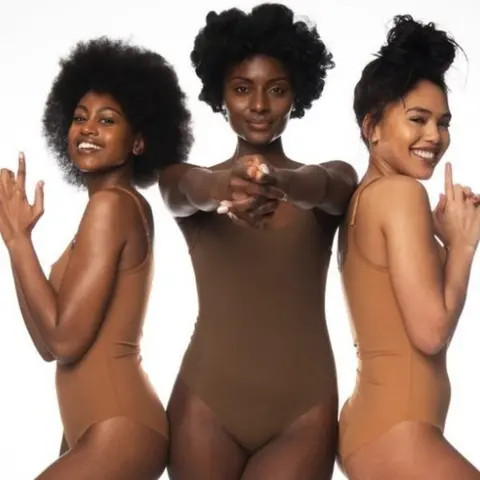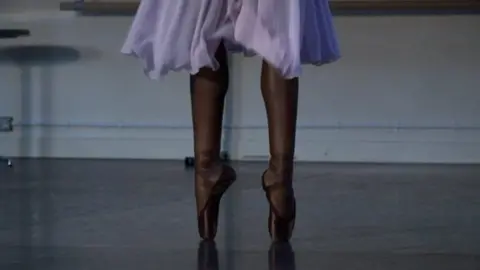Should the colour of plasters match skin tones?
 Dom Apollon
Dom Apollon Who knew something as mundane as using a plaster could provoke such an emotional and lively debate about racial identity?
That's what happened after Dom Apollon, 45, cut his finger at home in Oakland, California.
On attaching the dark brown plaster, Dom who works for a non-profit racial awareness organisation, was overcome with emotions as he realised how it perfectly matched his own skin colour.
 Dom Apollon
Dom Apollon Posting a picture on Twitter he wrote: ''It's taken me 45 trips around the sun, but for the first time in my life I know what it feels like to have a band-aid in my own skin tone," he said, referring to the plaster.
''You can barely even spot it in the first image. For real I'm holding back tears.''
Allow X content?
In a heartfelt series of tweets, which have been shared 96,000 times, Dom expressed how the simple household item provoked questions about his own racial identity.
''Not like I didn't know these strips existed. But I definitely didn't expect the complex emotions that would swirl as I watched it just ... blend in.
''This felt like belonging. Like feeling valued. Sadness for my younger self and millions of kids of colour, especially black kids.
''Like a reminder of countless spaces where my skin is still not welcomed. Feared. Hated.
''Like, why am I really thinking all this 'bout an effing band-aid?" he posted.
The thread which has been liked half a million times caught the attention of actor John Boyega, who posted his own experience of "nude" plaster usage while on the set of Star Wars.
Allow X content?
''An average day in an action film like Star Wars comes with jumps, falls, crashes and explosions etc. We patch up and keep it moving,'' he posted.
Author Malorie Blackman also weighed in on the conversation. Her novel Noughts and Crosses is set in a world divided by race, where black people (Crosses) are the rulers and white people (Noughts) are the underclass.
Allow X content?
Plasters for different skin tones are available to buy, but many social media users admitted they were unaware they could purchase any other shade but the standard "nude" colour.
''Future teacher here! Adding these to my list of essential classroom supplies!'' posted one Twitter user.
Others responded with their own examples of every day items they felt had in the past failed to represent them.
''Oh, man. The "flesh" crayon confused me so much when I was a kid, & my mom tried her best to help me find the crayon that matched me the best, but I remember being upset that nothing really worked,'' another user wrote.

You may also like

Another posted: ''I feel the same way about naming conventions for a variety of things: nude pantyhose, nude sandals, nude pumps, nude bras, you get the point.''
Others did not quite understand the point of the conversation.
''Um... it's just a bandage, man. When I was a kid I never really cared what colour it was. '' posted one Twitter user.
Although items such as toys, tights, and crayons are available in different skin tones, some independent businesses are increasingly catering for people of different skin colours.
 @nubianskin/Instagram
@nubianskin/InstagramIn 2014 Ade Hassan founded Nubian Skin a range of lingerie and hosiery for women of colour.
"I could never find simple things like tights in my skin colour, and having something so simple like nude not represent you, can feel very exclusive, like you are an afterthought," she told the BBC.

Similarly a range of ballet pump in different shades of bronze have also been created in the UK for the first time.
Ballet Black, whose dancers are all of black and Asian descent, have worked alongside shoe manufacturer Freed to create the new shoes.
Dancer Cira Robinson described what it meant to her to dance in ballet shoes that matched her skin colour: ''To have a shoe that I can just put on and go, I never thought that'd happen.''
